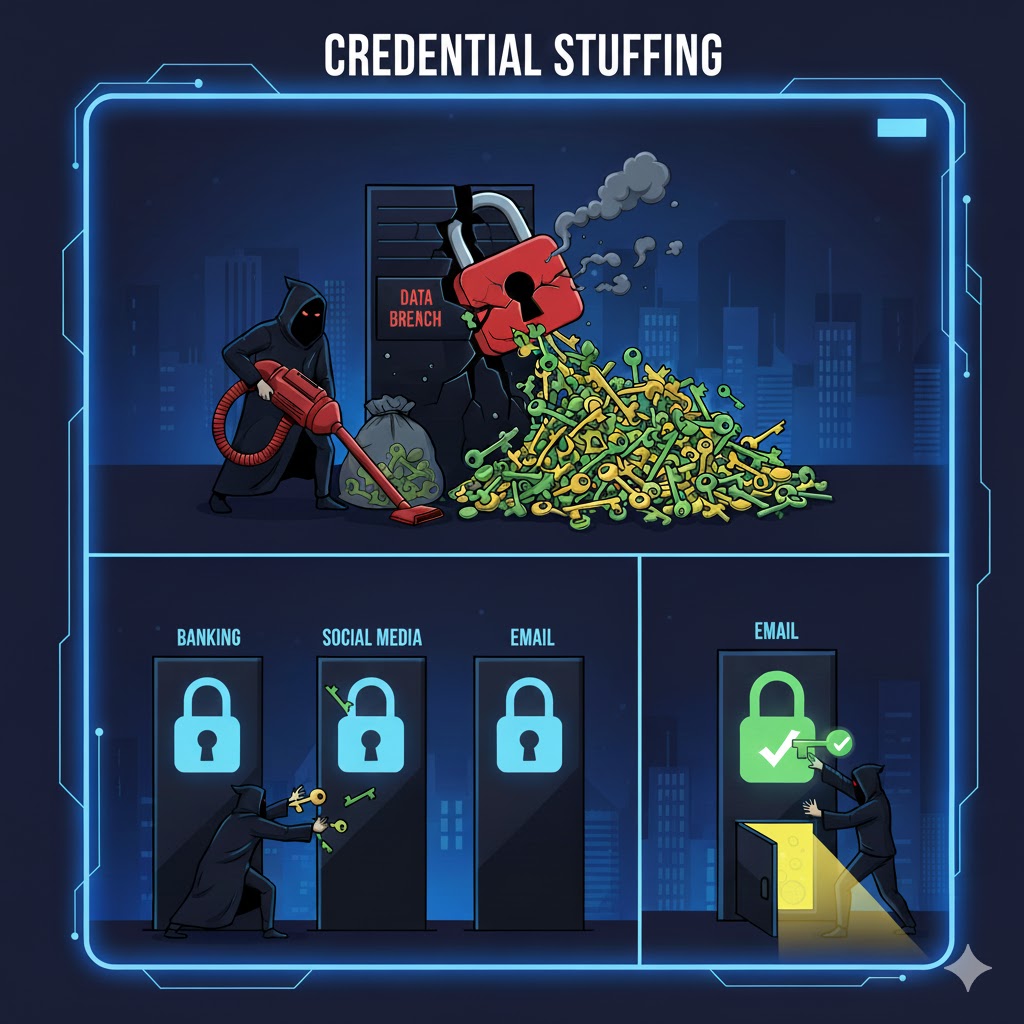
Credential stuffing is a pervasive cyberattack where thieves use stolen usernames and passwords from one data breach to try to log into your accounts on other websites. It exploits a common and dangerous habit: password reuse. If one site gets hacked, all your accounts that share that password are at risk.
How it works
- The Attack: Automated programs (bots) stuff’ vast lists of stolen credentials into login forms across many services (banking, social media, e-commerce).
- The Goal: To find a match and perform an account takeover (ATO).
- The Problem (Even for Low-Level Accounts): Credential stuffing gives attackers a crucial initial foothold. Even a low-level account is dangerous because it provides valid credentials, turning the attacker from an external threat into a “trusted” insider. This access is used for:
- Reconnaissance: Mapping the organization, identifying high-value targets (like admin accounts).
- Lateral Movement: Using the low-level account to launch spear phishing attacks against colleagues or to find other systems where the same password was reused (horizontal escalation).
- Privilege Escalation: Exploiting misconfigurations or vulnerabilities to move from a basic user to an administrator (vertical escalation).
- A “Trusted” Mask for Social Engineering: The compromised account’s email address or messaging app can be used to launch highly convincing spear phishing attacks against you or other employees. An email from “Sarah in Accounting” or your canva administrator for information is far more effective than one from a random external address.
- Business Email Compromise (BEC): The attacker can use the low-level account (especially in a finance or sales department) to send fraudulent invoices or unauthorized fund transfer requests to other employees or partners.
How to protect yourself and others
The most effective way to eliminate this initial foothold is to stop reusing passwords! Every single online account needs a unique, strong password. MOREnet has partnered with Keeper Password Manager to help you.
- Fully Utilize a Password Manager. Keeper’s built-in password generator will create and store highly complex and unique passwords for every site. Keeper’s browser extension can autofill them securely.
- Enable Multifactor Authentication (MFA) MFA adds a second layer of security. Even if an attacker has your password, they can’t log in without that second factor.
- Use Keeper as your authenticator app to generate and store time-based one-time passwords (TOTPs) right in your vault, making your logins both secure and convenient.
Credential stuffing is a highly effective attack method due to automation and password reuse. By fully committing to unique passwords generated and stored in your Keeper Vault and enabling MFA, you secure your digital life and prevent attackers from gaining the critical initial foothold they need.
If you are interested in Keeper’s password manager contact your MSA or email security@more.net
